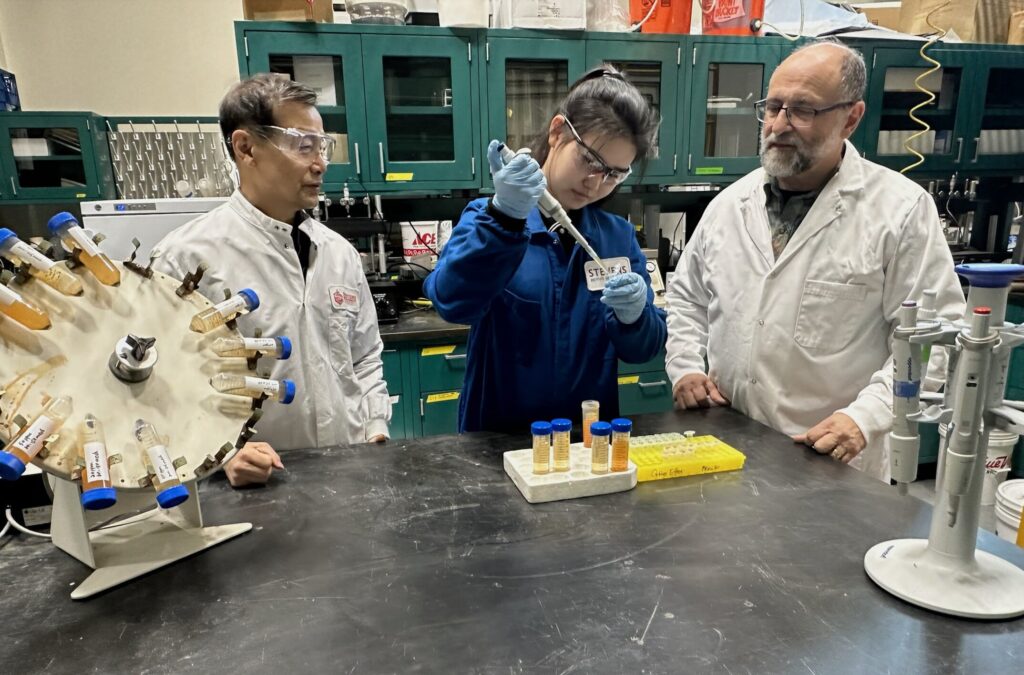
HOBOKEN, N.J. – In a groundbreaking study, researchers at Stevens Institute of Technology have discovered that iron powder significantly outperforms activated carbon in removing PFOS, a type of “forever chemical,” from water sources.
Immediate Impact
The study, led by professors Xiaoguang Meng and Christos Christodoulatos along with doctoral student Meng Ji, reveals that iron powder is 26 times more effective than activated carbon per unit surface area in adsorbing PFOS. This finding could revolutionize water purification processes, offering a more cost-effective and efficient solution to a growing environmental problem.
Key Details Emerge
PFOS, or perfluorooctane sulfonate, is part of a larger group of synthetic compounds known as PFAS, which have been widely used in various commercial applications. These include non-stick cookware, stain-resistant fabrics, and firefighting foams. However, their persistence in the environment and potential health risks, including cancer and liver disease, have raised significant concerns.
PFOS are found in soil, agricultural products, and drinking water sources, presenting a health risk.
Traditionally, activated carbon has been the go-to material for removing such contaminants from water through adsorption. However, the research team at Stevens Institute found that microscale zero-valent iron (mZVI), commonly referred to as iron powder, not only matches but exceeds the efficacy of activated carbon.
Industry Response
The announcement comes as industries and environmental agencies are under increasing pressure to find effective methods for removing PFAS from water supplies. The affordability and efficiency of iron powder make it an attractive alternative, potentially leading to widespread adoption in water treatment facilities.
By the Numbers
- Iron powder is 26 times more effective than activated carbon per unit surface area.
- Despite rusting, iron powder retains its adsorption properties.
- PFOS are part of the PFAS family, linked to health issues such as cancer and liver disease.
What Comes Next
According to Meng, the team plans to further investigate why rusted iron powder maintains its effectiveness. “Now we need to do more research to find out why,” Meng says, emphasizing the importance of these findings for developing large-scale removal technologies.
Background Context
This development builds on previous research into PFAS contamination and removal methods. As public awareness and regulatory scrutiny increase, the demand for innovative solutions is more urgent than ever. The study, titled “Kinetic and Mechanism Study of PFOS Removal by Microscale Zero-Valent Iron from Water,” was published in Environmental Science & Technology on March 19, 2025.
Expert Analysis
Experts in environmental engineering have praised the study for its potential implications. The unexpected resilience of iron powder, even when oxidized, highlights a promising avenue for future research and application. “The particles’ surface is covered by iron oxide, but it’s still very active,” Meng explains, underscoring the surprising nature of the findings.
Regional Implications
The timing is particularly significant because regions across the United States are grappling with PFAS contamination in their water supplies. The adoption of iron powder could provide a practical solution, reducing costs and improving the efficiency of water purification systems.
This discovery not only represents a significant shift from traditional methods but also offers hope for addressing a critical environmental challenge. As research continues, the potential for iron powder to transform water treatment practices remains a topic of keen interest among scientists and policymakers alike.





